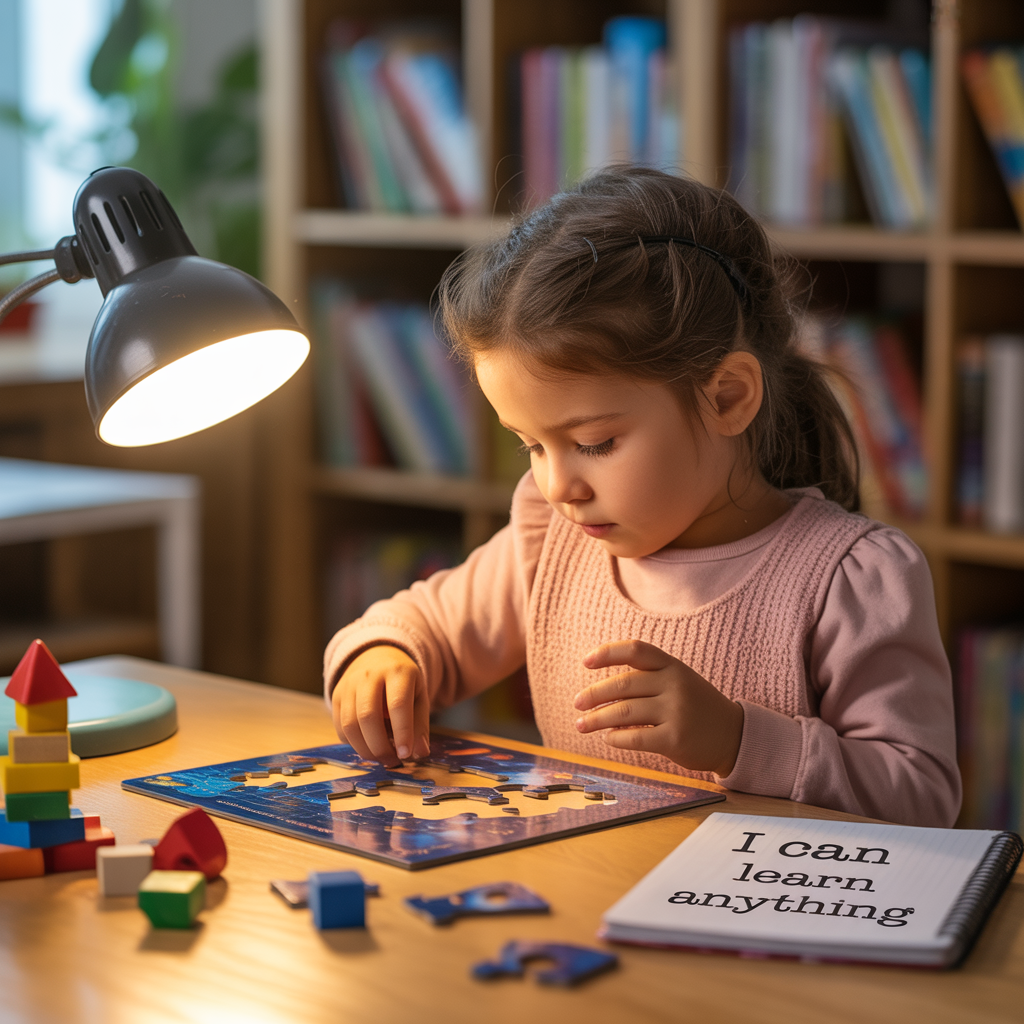“I’m just not good at this.”
“I’ll never get it right.”
“I can’t do it!”
Sound familiar? These are signs of a fixed mindset—the belief that abilities are set in stone. But what if your child could learn to see challenges not as threats, but as opportunities?
That’s where the growth mindset comes in.
Coined by psychologist Carol Dweck, a growth mindset is the belief that abilities can be developed through effort, strategy, and learning. And it’s a game-changer for kids.
In this article, you’ll discover simple, powerful ways to help your child build a mindset that fuels curiosity, resilience, and lifelong learning.
What Is a Growth Mindset?
- Fixed mindset: “I’m either smart or I’m not.”
- Growth mindset: “I can get better with practice.”
When kids believe they can improve, they:
- Try harder
- Take more risks
- Bounce back from failure
- Learn faster
- Build stronger confidence
Best of all, it’s a skill you can teach and model at home.
1. Praise Effort, Not Talent
Instead of praising outcomes (“You’re so smart!”), focus on what they did to get there.
Say:
- “You worked really hard on that puzzle!”
- “I love how you kept trying, even when it was tricky.”
- “You figured out a new way to solve that!”
This teaches kids that success comes from effort—not just ability.
2. Celebrate Mistakes as Learning Moments
Mistakes are part of the process. Instead of avoiding them, lean in.
When your child makes a mistake:
- Stay calm
- Reflect together: “What could we try next time?”
- Share your own: “I made a mistake at work today, and I learned from it!”
Normalize errors as stepping stones—not dead ends.
3. Add the Word “Yet”
Help your child shift their mindset with one small word: yet.
- “I can’t do this” → “I can’t do this yet.”
- “I’m not good at math” → “I’m not good at math yet.”
This tiny word reminds them that growth is ongoing.
4. Model a Growth Mindset Yourself
Children learn from what you say and how you respond to challenges.
Try:
- “This is hard, but I’m going to keep trying.”
- “I’m still learning, and that’s okay.”
- “I don’t know the answer yet, but I’ll figure it out.”
Your self-talk teaches them how to talk to themselves.
5. Ask Process-Oriented Questions
When you ask about school or activities, avoid only asking about grades or wins.
Ask:
- “What was challenging today?”
- “What did you learn?”
- “Did you try something new?”
- “How did you handle that tricky part?”
This shifts the focus from outcome to growth.
6. Emphasize the Power of “Practice”
Help your child see that talent grows with consistent effort.
Examples:
- Show before-and-after drawings or handwriting samples
- Reflect on how they learned to walk, talk, or ride a bike
- Use sports, art, or music to show skill development over time
Celebrate progress, not perfection.
7. Use Growth-Oriented Language
The words you use matter. Try shifting your phrases:
Instead of:
❌ “You’re so smart!”
✅ “You worked hard to figure that out!”
Instead of:
❌ “This is too hard.”
✅ “This is challenging—and you’re learning!”
Instead of:
❌ “Be careful—you’ll mess it up.”
✅ “Give it a try! Mistakes help us grow.”
8. Create a “Wall of Growth”
Display evidence of effort and improvement:
- Before-and-after drawings
- Completed puzzles or Lego creations
- School projects that show perseverance
This visual reminder celebrates process over product.
9. Help Them Set Small, Reachable Goals
Big goals can overwhelm. Teach your child to break things down:
- “Today I’ll read 5 pages.”
- “I’ll practice piano for 10 minutes.”
- “I’ll try to write one sentence with my new words.”
Small wins build momentum and confidence.
10. Reframe “I Can’t” Statements
When your child says “I can’t,” guide them to reframe:
❌ “I can’t do this.”
✅ “What’s the first step I can try?”
❌ “I’m bad at this.”
✅ “What can I learn from this attempt?”
Help them switch from shutdown to solution mode.
Final Thought: Growing Minds Build Resilient Hearts
Helping your child develop a growth mindset isn’t about pushing harder—it’s about believing they can grow, even when it’s hard.
It’s teaching them that effort is brave. That trying again is powerful. That failure isn’t the end—it’s part of the story.
With your support, your child will learn to say:
“I’m not there yet… but I’m on my way.”
